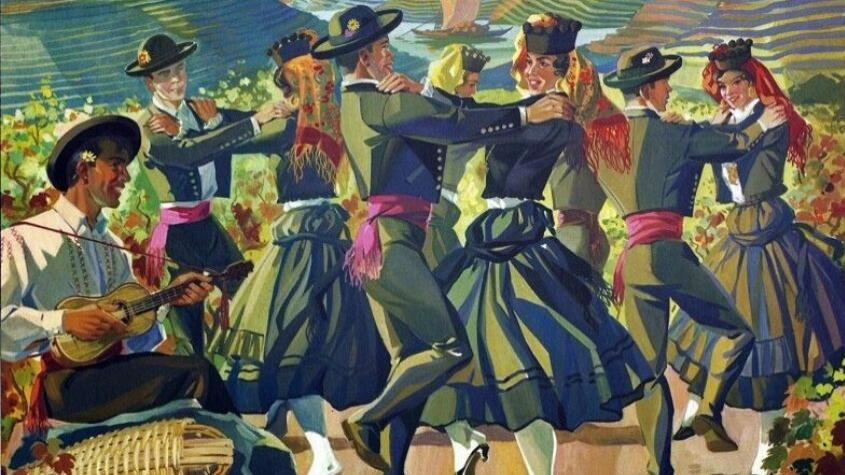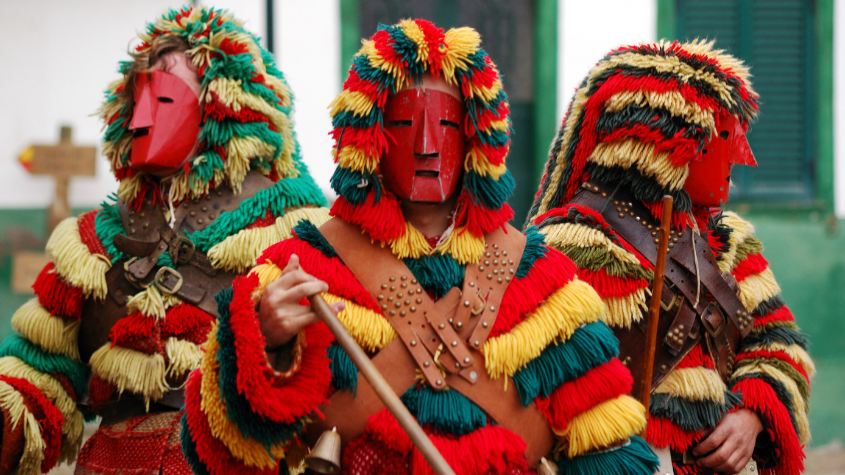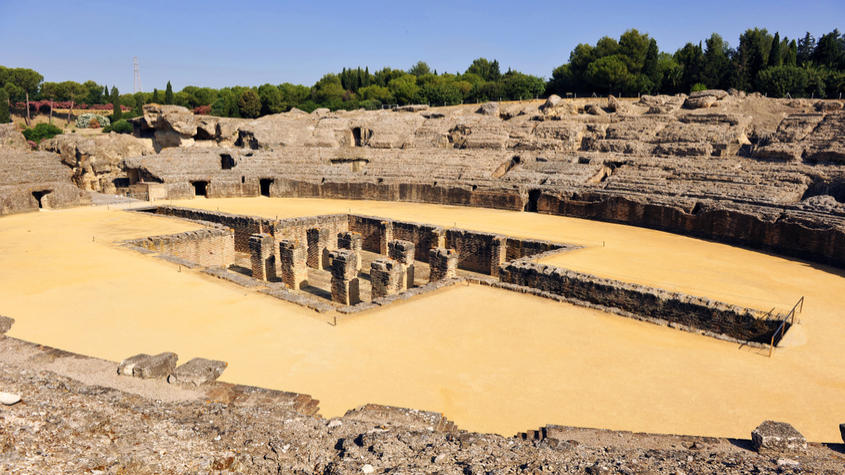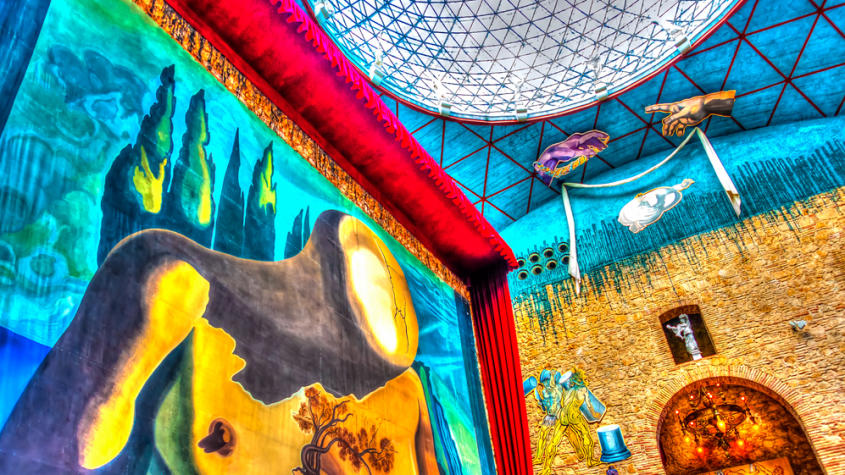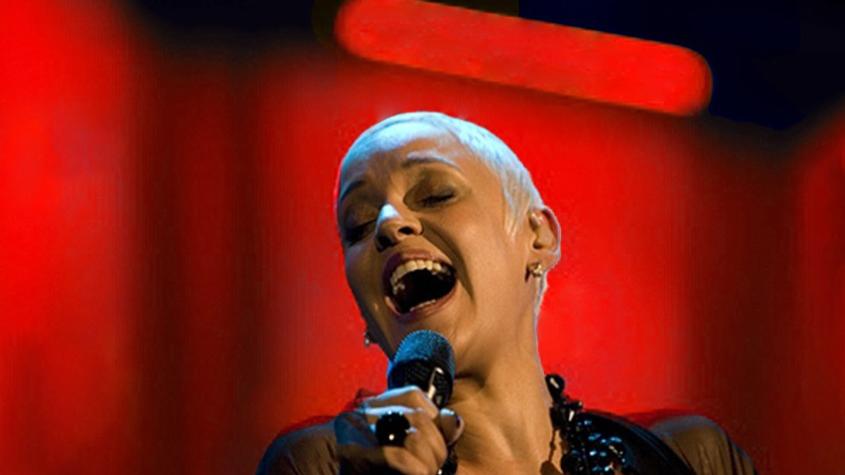
Fado, Music with Portuguese Life
Much has been written and spoken about what Fado is, its originality, its vibrant and deep sonority, its importance for the creation of the consciousness of what it is "to be Portuguese".
If in anthropological terms one can hardly speak of a "Portuguese soul", it is, however, indisputable the contribution of Fado music to the perception and realization of Portuguese identity and culture. A culture that seeks much of its affirmation in the traditional and authentic.
Perhaps the best is to know in a factual way, what characterizes Fado, so we can understand the intense affection that sometimes creates with the Portuguese and people from all over the world. And that precisely makes this musical style, an expression that resonates both locally and internationally.
In 2011, Fado was considered Intangible Heritage of Humankind by UNESCO.
The originality of Fado
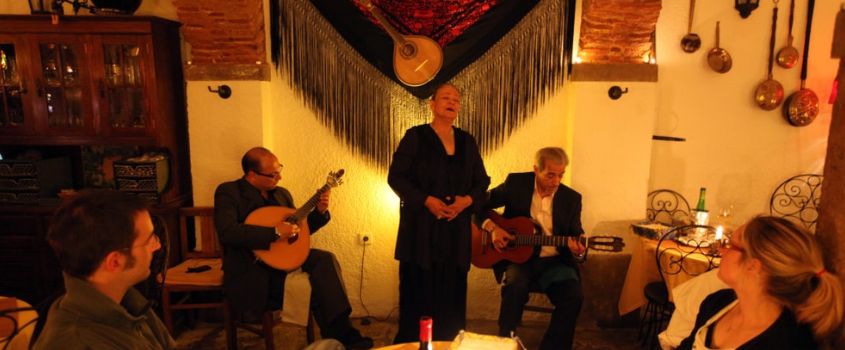
Fado is a typical Portuguese musical style, born in the urban context of Lisbon in the 19th century. Often sung by a single person, fadista, accompanied by a classical guitar or viola and a Portuguese guitar. The word fado comes from the Latin "fatum" and is understood in the Portuguese language as fate, luck or bad luck, fortune. It is also a way of living, feeling, and expressing, in the form of a popular song, the ups and downs that life has. And a special way to remember and invoke the deep feeling of nostalgia (saudade) for a person, a moment, or a place.
The originality of Fado comes a lot from the sonority of the instruments, the popular poetics of the lyrics, and its performance with strong, soaring voices that leave no one indifferent. Its simple melodic structure values the interpretation of the voice, which in turn sings the words and meanings very clearly.
There is an idea that Fado only "sings" sadness and tragedy. But there are many themes and types of Fado, very joyful, festive and even interventionist.
Types of Fado
The oldest fado is the "fado of the sailor", which was the model for all the others. From this common matrix, several styles or types of Fado were created:
Fado Alcântara, Aristocrat, Bailado, Batê, Fado-canção, Castiço, traditional Fado from the typical Lisbon neighborhoods, Fado Corrido (cheerful and danceable), Experimental, Fado Lopes, Fado Marcha Alfredo Marceneiro, da Meia-noite, Fado Menor (melancholic, sad and nostalgic), Mouraria, Pintadinho, Fado Tango, Tamanquinhas, Fado Vadio, Vidualeiro.
To which we can add a mixture of traditional or popular melodies. And songs that include or intersect with Fado.
A Brief History of Fado
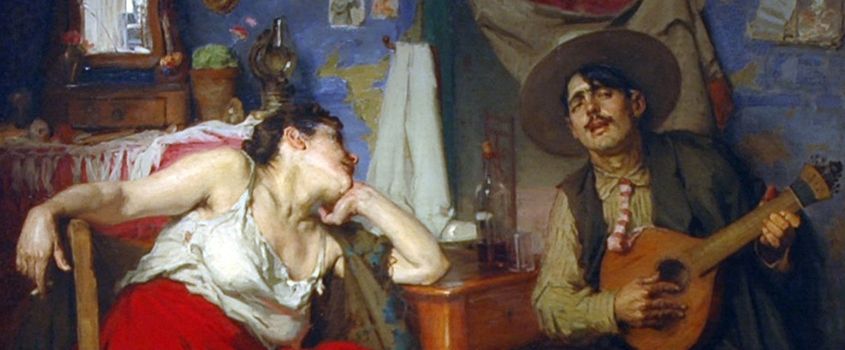
The history of Fado can be told with a solid degree of certainty from the XIX century, born in the popular contexts of Lisbon. Fado was sung mainly in moments of conviviality and leisure or festive events, in the typical neighborhoods, either in the streets, taverns, cafes and houses, or in operettas and revue theater (a genre of this art). Often expressed in a spontaneous way, it sang the narrative of daily life, loves and sorrows, victories and defeats, joy and difficulties, using slang and slang. The first known fado singer was Maria Severa Onofriana.
Fado has its origin in social contexts and physical places associated with marginality and transgression, in environments frequented by prostitutes, faias, marujos, boleeiros and marialvas. Peripheral environments, potentially dangerous, but that arouse desire and attraction. The bohemian character of Fado in its matrix, with its mixture of excitement and danger, gave it a special aura that lasts until today.
From the first decades of the twentieth century on fado spread and began to be known in all bangs of society. To this contribute the popular appreciation, the publication of periodicals dedicated to the theme, and new performing spaces. Fado also began to be seen under a commercial perspective. It also begins to be national.
Proof of this is the appearance of professional Fado companies from the 1930s on, shows, with quality casts, and their circulation through theaters from north to south of the country, or even on international tours. Technical inventions such as the electric microphone, in 1925, radio, sound films, and later, television in 1957, allowed for its recording and broadcasting throughout the country. Add to this today, the digital world and the internet.
The way in which centuries-old cultural expressions like Fado undergo transformations in their history, is also influenced by political and economic reasons. With the military coup of May 28, 1926, came the Dictatorship (1926-1933) and later the Estado Novo of Salazar and Marcelo Caetano (1933-1974). This had a profound impact on fado, which was elevated to the category of national cultural symbol, an expression of portugality, or of what it is to be Portuguese. It was also during this long period that Fado affirmed itself on the international stage, first in the colonies and Brazil, and then around the world. Icon of this golden period is the fadista Amália Rodrigues (1920 - 1999), considered even today as the "Queen of Fado".
In parallel, Fado became more moral, apolitical, lacking the intervention and provocation of its origin. The artists, companies, and performance halls were closely watched. The lyrics passed through the regime's censorship. It affected the improvisational character that was part of its matrix and induced the professionalization of all those who were connected to its creation and expression.
Fado became "typical".
With the revolution of April in 1974, the democratic state was established and the influence of mass culture, globalization, freedom of thought and expression. Fado suffered a bit during the years of transition due to its past as a symbol of the dictatorship, but quickly gained national consensus as Portuguese musical heritage. Amália Rodrigues and Carlos do Carmo were key figures in this new transformation of fado, especially in the 80s.
From the 90's on fado would definitively establish itself on the international music circuit with fado singers such as Camané, Mariza, Carminho, Mísia, Cristina Branco, Cuca Roseta, Gisela João, Ana Moura. Just to give a few examples.
Currently fado has also been explored in mixture with other genres and styles of music. Beyond the traditional or typical, Fado has become experimental.
The Portuguese Guitar
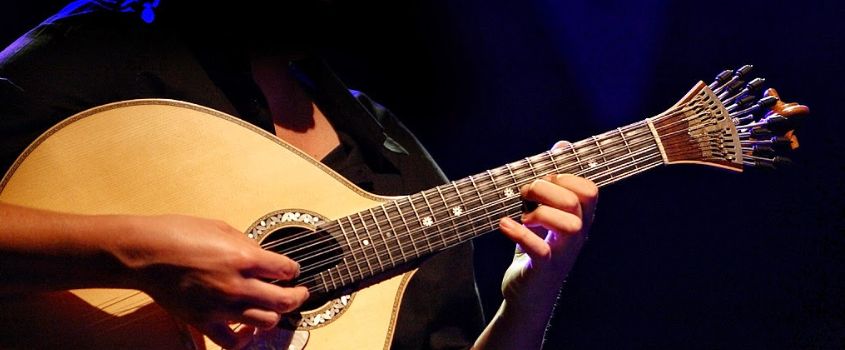
The Portuguese guitar is the great companion of the voice, in Fado. Like most stringed musical instruments, the Portuguese guitar has 6 orders of 2 strings, making 12 in total. The harmonic box is periform and its timbre is unmistakable.
Despite having undergone important technical changes in the last century, it has preserved the peculiar tuning of the zither and the fingering technique. And in fact, the technique of playing this type of chordophone is based on a special right-hand fingering, using the fingernails of the index finger and thumb.
There are three types of Portuguese Guitar: Lisbon, Coimbra and Porto.
The Lisbon one has a low rounded case and the sound is more strident, open. The head of the guitar is usually snail-shaped.
The Coimbra is larger, with the body assuming a sharper shape. The head is tear-shaped.
The Porto is the smallest of the three, has a slightly lower sound, and the head is dragon or flower shaped.
Some of the greatest of Portuguese guitar players are Armando Augusto Freire, Carlos Paredes and his father, Artur Paredes, Adriano Correia de Oliveira, among many others. From whom it can be said, by way of praise, that they make, or made, the guitars “sing”.
Listening to Fado in Portugal
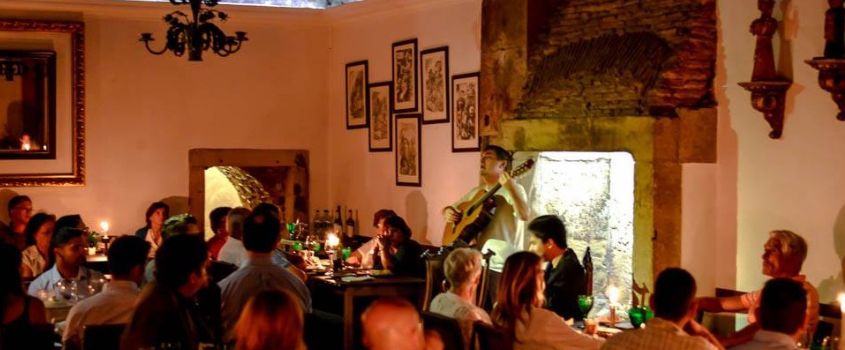
As a national musical style, you can hear Fado in Portugal in any region of the country. Streets, Fado houses, concert halls, bars, restaurants, music festivals and in private homes or events.
However, its tradition is stronger in Lisbon, Coimbra and Porto.
There are many Fado houses in Lisbon, mainly in the traditional neighborhoods of Mouraria, Bairro Alto and Alfama.
Usually accompanied with dinner or drinks, these are places whose walls tell their long tradition, in the city where Fado was born.
Fado in Coimbra is very connected to the academic traditions of the University and students from all over the country. It is exclusively sung by men, and both singers and musicians wear the black academic costume. It is sung at night, almost in the dark, in squares or streets of the city, the most important events being the Serenades. The outdoor spaces, squares or streets are the privileged stage for these performances. If you are looking for an indoor venue, A Capela may be a good option.
Also, in the capital of the North, you can hear the voices and guitars of this musical style. Fado in Porto can be appreciated in typical houses or boats, over the Douro River. Preferably at night.
• Fado show in Porto with dinner
• Fado Show with Visit to a Port Wine Cellar
• Fado Show in Porto with Wine Tasting
Tip when watching a Fado show: it is not advisable to clap between songs. Only at the end of the show.
You can ask the artist to dedicate the song to someone you wish to honor, preferably before the show or during the intermission.
Top Portuguese Fado Artists
For readers looking for references of Fado artists to listen to we leave here some names.
Older established artists:
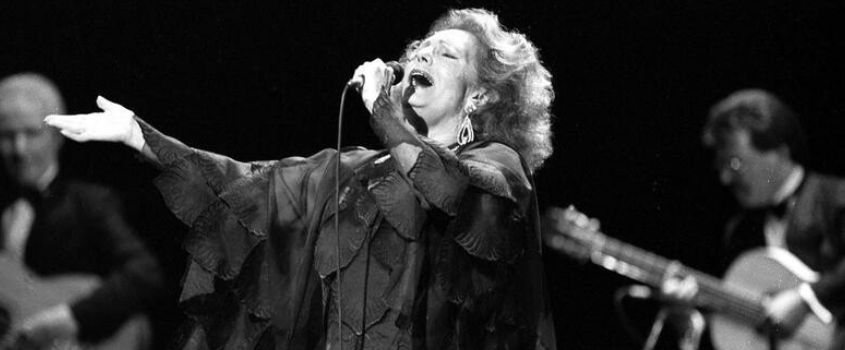
Maria Severa Onofriana, Amália, Carlos do Carmo, Alfredo Duarte Marceneiro, Fernando Farinha, Carlos Ramos.
Contemporary established artists:
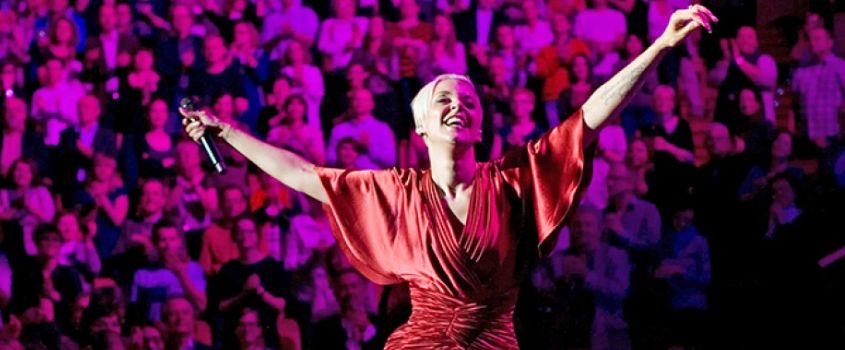
Ana moura, Dulce Pontes, Gisela João, Mariza, Camané, Piedade Fernandes, Aldina Duarte, Ana moura, Hélder Moutinho, frei Hermano da Câmara, Ana Sofia varela, Carminho, Sara Correia, Telmo Pires, Cristino Branco, Mísia.
Other artists, more traditional or daring, appear continuously, and keep the vibrant sound of Fado alive.
Whether you like it or not, there is a consensual opinion that listening to Fado leaves no one indifferent. It is an encounter with the life of the Portuguese, and with the life of those who listen to it.
And to finish, "silence, we're going to sing fado":
Amália Rodrigues, Povo Que Lavas No Rio
Did you like it?
Average votes: 4.18 of 5
Go Back to the Blog







